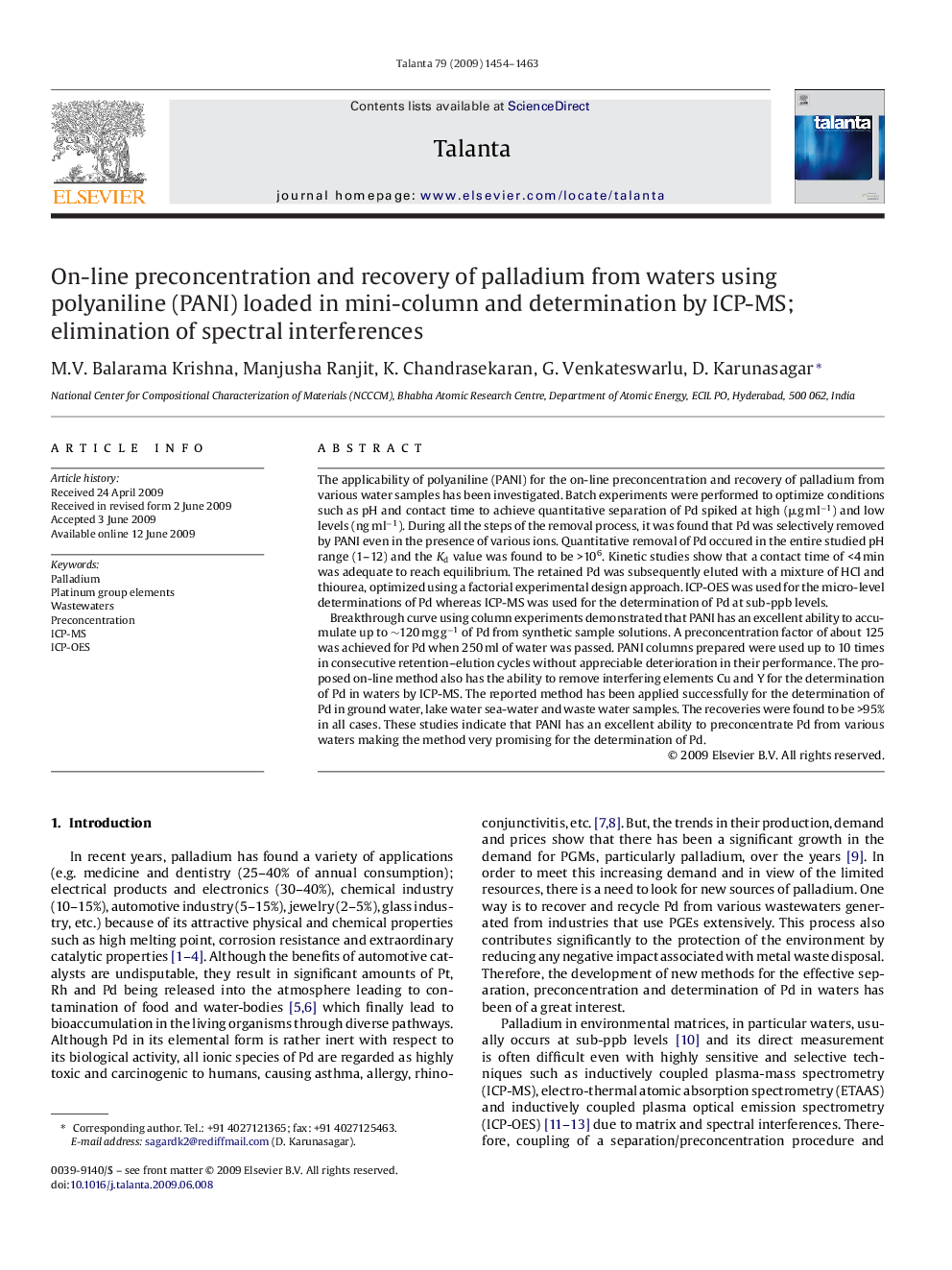| Article ID | Journal | Published Year | Pages | File Type |
|---|---|---|---|---|
| 1246847 | Talanta | 2009 | 10 Pages |
The applicability of polyaniline (PANI) for the on-line preconcentration and recovery of palladium from various water samples has been investigated. Batch experiments were performed to optimize conditions such as pH and contact time to achieve quantitative separation of Pd spiked at high (μg ml−1) and low levels (ng ml−1). During all the steps of the removal process, it was found that Pd was selectively removed by PANI even in the presence of various ions. Quantitative removal of Pd occured in the entire studied pH range (1–12) and the Kd value was found to be >106. Kinetic studies show that a contact time of <4 min was adequate to reach equilibrium. The retained Pd was subsequently eluted with a mixture of HCl and thiourea, optimized using a factorial experimental design approach. ICP-OES was used for the micro-level determinations of Pd whereas ICP-MS was used for the determination of Pd at sub-ppb levels.Breakthrough curve using column experiments demonstrated that PANI has an excellent ability to accumulate up to ∼120 mg g−1 of Pd from synthetic sample solutions. A preconcentration factor of about 125 was achieved for Pd when 250 ml of water was passed. PANI columns prepared were used up to 10 times in consecutive retention–elution cycles without appreciable deterioration in their performance. The proposed on-line method also has the ability to remove interfering elements Cu and Y for the determination of Pd in waters by ICP-MS. The reported method has been applied successfully for the determination of Pd in ground water, lake water sea-water and waste water samples. The recoveries were found to be >95% in all cases. These studies indicate that PANI has an excellent ability to preconcentrate Pd from various waters making the method very promising for the determination of Pd.
